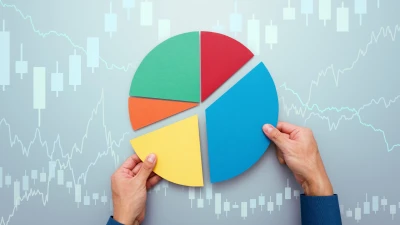COVID-19 and the future of globalisation



The COVID-19 shock has profoundly altered the outlook for globalisation in terms of trade, capital, information and people.
Our analysis indicates that the post-Global Financial Crisis (GFC) compositional shift towards new engines of globalisation is likely to be disrupted (see Chart 1). Cross-border information flows will see explosive growth but this will be offset by a severe impairment in people movement combined with a further deceleration in the ‘old’ engines of globalisation of trade and capital integration.
More importantly, we do not expect the aggregate pace of aggregate globalisation to return to its already disappointing pre-COVID trend path. Moreover, our updated scenarios analysis implies that the risks are tilted towards an even more damaging long-term reversal of globalisation.
TRADE – SHIFTING INCENTIVES LEAD TO REORIENTATION
Prior to the COVID-19 shock, growth in the cross-border integration of goods markets had already weakened substantially. In the years immediately after the crisis, multilateral policy impetus weakened. Then the US-China trade war dealt an additional blow with increases in bilateral tariff non-tariff barriers to trade reversing the multi-decade declining trend.
Looking forward, global trade is expected to contract even more than gross domestic product (GDP) in 2020 due to the severity of the global downturn and disruption to supply chains. Indeed, the COVID-19 shock has highlighted the vulnerabilities that exist in a system where companies had lengthened and complicated their supply chains designed to optimise their labour, regulatory and tax costs.
The COVID-19 shock is likely to profoundly impact these incentives. Supply chains are likely to be shortened and reoriented to focus more on resilience and diversification, amplified by government policies and regulations.
This means a shift towards more strategic micro supply chains, which are decentralised, have flexible supplier contracts and manufacture closer to the final point of purchase. While some restructuring of supply chains is optimal, many of these changes will increase firm costs and be passed on to consumers. China’s pivotal role in the production of intermediate goods will be especially hard to replace as US-China trade relations continue to deteriorate.
In this scenario, and under greater political pressures, there will be even more impetus for the global trading system to fragment into regional trading blocs. China and the US are the largest sources of demand in their regional blocs and thus will be crucial in determining how companies square off the demands of minimising cost and supply chain disruption while maintaining maximum market access. And this will all take place amidst an increasingly fractious strategic rivalry.
Smaller countries may be forced into a more proactive choice to capitalise on these shifting value chains and reorient their labour and industrial policy to gain from the coming shift in the global trading order. They will also face difficult choices about which blocs to align with, decisions that will also influence global security arrangements.
Meanwhile, export-led development models will be less viable, advantaging those economies with large domestic markets and the ability to implement reforms to increase the efficiency of domestic industries.
CAPITAL – NATIONALIST SENTIMENT TO THE FORE
Prior to the COVID-19 shock, we had expected capital market integration to continue, albeit more slowly than its long-term average, with de facto outpacing de jure integration. But capital integration is now likely to slow further, or even stall, as a result of COVID-19.
Returns on foreign direct investment are likely to decline further, reflecting the likely shortening of supply-chains, as firms seek to re-shore or regionalise production, and as a by-product of companies insulating production processes from future disruption.
Capital market integration may be especially affected in emerging markets. The COVID-19 shock puts emerging markets under extreme pressure, with capital flight (in effect) reducing policy-makers’ space to act. It seems likely that not all capital controls put in place to help navigate the shock will be fully rolled back afterwards. And even if emerging markets escape with few balance of payments crises, the appetite for further capital account opening is likely to be reduced.
Finally, with US-China relations so frayed, the politicisation of portfolio flows presents a new risk which could lead to a marked fall in both de jure and de facto capital integration in both developed markets and emerging ones.
PEOPLE – LAST TO RECOVER
The ‘people’ component of globalisation – international tourism and migration flows – is where we expect to observe the largest longer-run reductions in the pace of integration compared with our baseline expectations before the COVID-19 pandemic.
Beginning with tourism, international flows had grown at an average rate of 5.1% over the past decade, with the volume of arrivals reaching 1.5 billion in 2019. Prior to the current crisis, the World Tourism Organisation was projecting arrivals to increase at around a 4% annualised rate over the next five years, implying further moderate increases in the ratio of tourism activity to global GDP.
COVID-19 has radically changed this structural outlook. Around 70% of countries have completely closed their borders to international tourists, and total volumes are likely to fall between 60% and 80% this year. Moreover, the sector will be one of the last to exit restrictions making a return to its previous trend path unlikely, with the long-term growth rate to also be lower. That reality is already being acknowledged by airline companies, many of which are making permanent cuts to their workforces, aircraft orders and travel routes.
The only scenario in which there is no damage done to the long-term outlook for tourism is if a highly-effective mass vaccine is found, vaccination rates are very high, and travellers do not remain concerned about potential exposure to new viruses.
Migration flows, meanwhile, had been on a declining trend even before the current crisis. Setting aside the 2017 spike relating to the Syrian crisis, trend annual growth dropped by around a half between 2006 and 2018, though growth was still well above the average of the 1990s.
This trend mainly reflected the more vexed politics of migration in the wake of the financial crisis in the developed countries. With real income growth weak by historical standards and income and wealth inequalities also elevated, the median voter became more responsive to messages implying that migration was suppressing wage growth and putting undue pressure on public services. As a result, policy also began to shift, either under the guidance of populists themselves or mainstream parties trying to preserve their influence.
The potency of such messages will likely strengthen in the wake of the COVID-19 crisis. Unemployment will rise to multi-decade highs in a number of countries. That in turn will put further downward pressure on wage growth.
Meanwhile, governments are unlikely to prioritise the public spending that would be needed to accommodate sustained migration flows. Already, the Trump administration has suspended the issuance of some classes of US visas in the near-term and Australian and British governments have indicated the migration regime will be more restrictive, particularly for low-skilled workers.
INFORMATION – COMPRESSED INNOVATION BODES FOR REBOUND
Cross-border data flows have become the most powerful positive contributor to the growth of our globalisation index since the GFC. Estimates of global data flows indicate there was a 45-fold increase between 2005 and 2014, with forecasts for a further nine-fold increase by 2021.
The rapid increase has been partly facilitated by a reduction in data transmission costs but a more powerful driver has been technology changes associated with the emergence of digital technologies such as big data, cloud computing, 5G, artificial intelligence (AI), Internet of Things and robotics.
The unique nature of the COVID-19 shock augurs well for an acceleration of cross-border information flows. Firstly, efficient data collection and enhanced digital architecture are likely to be critical to tracking the COVID-19 pathogen and to planning disease prevention efforts. Secondly, in the absence of medical treatment or vaccine, social distancing is likely to remain the most effective virus-containment strategy implying greater on-lining of communication and commercial services trade.
The ongoing economic downturn may also reduce the opportunity costs for long-term investment and accelerate the innovation process related to digital technologies in the latter commercialisation and diffusion stages.
However, our optimism for a rapid acceleration of cross-border information flows is tempered by the lack of uniformity in standards and rules across international borders and jurisdictions. We have already witnessed a schism in regulatory approaches on data privacy while a fragmentation in areas such as 5G, AI, e-currencies and smart cities raises political red flags over the global welfare benefits of these technologies in the medium term. Moreover, the US trade policy action is increasingly focused on the Chinese tech sector, which has the potential to weaken cross-border information exchange.
Another challenge is taxation. The OECD estimates large technology firms avoid $100-$240 billion in taxes annually, corresponding to 4% to 10% of global corporate tax revenues. Countries have started to take unilateral measures due to a delay to an agreement of an international digital service tax. Although the COVID-19 shock has made the prospect of a global deal more remote, the EU recovery plan places digital taxation at the center of its revenue plans.
Govinda Finn is Japan and developed Asia economist at Aberdeen Standard Investments.
Recommended for you
Managing currency risk in an international portfolio can both reduce the volatility, as well as improve overall returns, but needs to be navigated carefully.
In today’s evolving financial landscape, advisers are under increasing pressure to deliver more value to clients, to be faster, smarter, and with greater consistency.
Winning one premiership can come down to talent, luck, or timing but winning multiple ones indicates something deeper and successful is at play, writes Darren Steinhardt.
As fixed income markets evolve, advisers are questioning how to deliver consistent income, manage downside risk, and diversify exposures, all while navigating an uncertain interest rate environment










